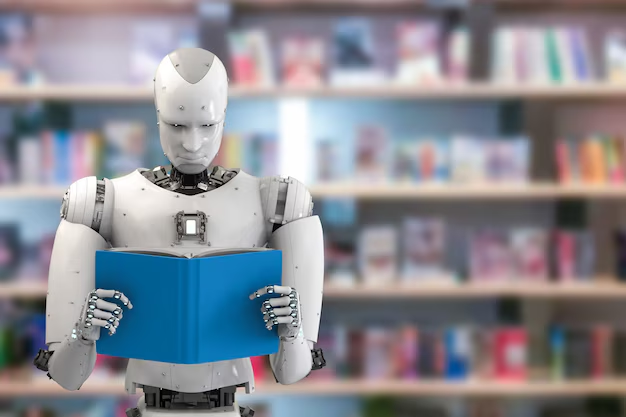Artificial Intelligence (AI) is revolutionizing multiple industries, and education is no exception. With advancements in machine learning, data analytics, and natural language processing, AI is reshaping how we approach teaching and learning. From personalized learning experiences to automating administrative tasks, AI has the potential to enhance the educational landscape in profound ways. In this article, we explore how AI is transforming education and the benefits it brings to students, teachers, and educational institutions.
1. Personalized Learning
One of the most significant ways AI is transforming education is through personalized learning. AI can adapt to the learning style and pace of each student, ensuring that lessons and materials are tailored to their individual needs. With AI-powered platforms, students can receive customized feedback and guidance based on their strengths and weaknesses.
For instance, adaptive learning technologies use AI to assess students’ progress and adjust the difficulty level of lessons accordingly. This ensures that students are neither overwhelmed by the material nor bored due to a lack of challenge. Such platforms can also identify areas where students need more practice, providing targeted resources to help them improve.
Key Benefits:
- Customizes lessons based on individual needs.
- Provides real-time feedback for continuous improvement.
- Helps identify and address learning gaps early.
2. AI-Powered Tutoring Systems
AI-powered tutoring systems are making education more accessible by providing additional support to students outside the classroom. These systems, such as chatbots and virtual tutors, can interact with students in real-time, answering questions, explaining concepts, and providing guidance on homework or assignments.
These AI-driven tutors are available 24/7, which means that students can access help whenever they need it. Moreover, these systems are capable of analyzing a student’s performance over time and offering personalized recommendations for improvement. This creates an effective learning environment for students who need extra assistance or prefer learning at their own pace.
Key Benefits:
- Provides on-demand assistance.
- Supports self-paced learning.
- Offers personalized recommendations and feedback.
3. Automating Administrative Tasks
AI is not only transforming the classroom but also making administrative tasks more efficient. Tasks such as grading assignments, tracking student performance, and scheduling can be automated using AI tools. For example, AI can grade multiple-choice and short-answer questions, freeing up teachers’ time to focus on more complex tasks like lesson planning and student engagement.
AI can also assist with administrative planning, such as scheduling meetings or tracking attendance. This automation reduces the burden on teachers and administrative staff, allowing them to spend more time supporting students.
Key Benefits:
- Reduces time spent on repetitive administrative tasks.
- Increases efficiency and productivity for teachers and staff.
- Allows educators to focus more on teaching.
4. Enhancing Learning with Virtual Classrooms and AI Tutors
The rise of virtual classrooms has been accelerated by AI, particularly in remote learning environments. AI-driven platforms are improving online education by making it more interactive and engaging. Virtual classrooms powered by AI offer real-time collaboration, automated assessments, and interactive content that can enhance the learning experience.
In addition to AI-powered tutors, AI-driven learning management systems (LMS) can monitor student progress and recommend resources such as videos, articles, or practice exercises to help reinforce concepts. AI can also detect patterns in student behavior and engagement, enabling instructors to adjust their teaching strategies accordingly.
Key Benefits:
- Provides an engaging online learning experience.
- Enhances student-teacher interaction in virtual classrooms.
- Offers personalized content and resources based on student progress.
5. Predictive Analytics for Student Performance

AI is also helping educators make data-driven decisions by leveraging predictive analytics. Using historical data and machine learning algorithms, AI can predict student outcomes, such as the likelihood of passing a course or the risk of falling behind. This allows educators to intervene early and offer additional support to students who may be struggling.
Predictive analytics can also help schools and universities improve retention rates by identifying students who are at risk of dropping out. By proactively providing support to these students, institutions can reduce attrition and ensure more students successfully complete their studies.
Key Benefits:
- Helps predict student performance and outcomes.
- Allows early intervention for at-risk students.
- Improves retention rates by addressing issues before they escalate.
6. AI in Content Creation and Curriculum Development
AI is also changing the way educational content is created and developed. AI-powered tools can help educators design curriculum and teaching materials that are aligned with the needs of the students. By analyzing trends in student performance, AI can suggest content adjustments to better engage students and enhance their learning experience.
AI can also assist in creating personalized learning content, such as interactive simulations, quizzes, and educational games. These tools help students learn complex subjects in a more engaging and accessible way.
Key Benefits:
- Facilitates the creation of engaging and relevant educational content.
- Helps align curriculum with student needs and preferences.
- Enables the development of interactive learning tools.
7. AI for Accessibility and Inclusion
AI is playing a crucial role in making education more accessible and inclusive. For students with disabilities, AI-driven tools can provide personalized accommodations such as speech-to-text, text-to-speech, and real-time translation. These technologies break down barriers and ensure that all students, regardless of their abilities, can access and benefit from education.
AI can also support students who face language barriers by offering real-time translation services and helping non-native speakers learn and understand the curriculum more effectively.
Key Benefits:
- Improves accessibility for students with disabilities.
- Supports language learning and translation.
- Ensures equal educational opportunities for all students.
Conclusion
Artificial Intelligence is fundamentally transforming education by offering personalized learning experiences, automating administrative tasks, and enhancing content creation. By improving access to education, increasing efficiency, and providing support to both teachers and students, AI is making learning more engaging and inclusive. As AI technology continues to evolve, its impact on education will only grow, paving the way for more innovative and effective teaching methods in the future.
FAQs
Q1: How does AI help personalize education?
A1: AI personalizes education by adapting to each student’s learning pace and style. It provides customized feedback and resources based on individual performance, helping students learn more effectively.
Q2: Can AI replace teachers?
A2: While AI can enhance education by automating tasks and providing personalized support, it cannot replace teachers. Teachers still play a crucial role in guiding students, fostering creativity, and providing emotional support.
Q3: How does AI improve administrative tasks in education?
A3: AI automates tasks like grading, scheduling, and tracking student performance, reducing the workload for teachers and administrative staff. This allows them to focus more on student engagement and support.
Q4: What are the benefits of AI in virtual classrooms?
A4: AI enhances virtual classrooms by offering real-time collaboration, personalized content, and interactive assessments. It makes remote learning more engaging and accessible for students.
Q5: How does AI help students with disabilities?
A5: AI provides tools like speech-to-text, text-to-speech, and real-time translation to assist students with disabilities. These technologies improve accessibility and ensure equal opportunities for all students in the learning environment.


